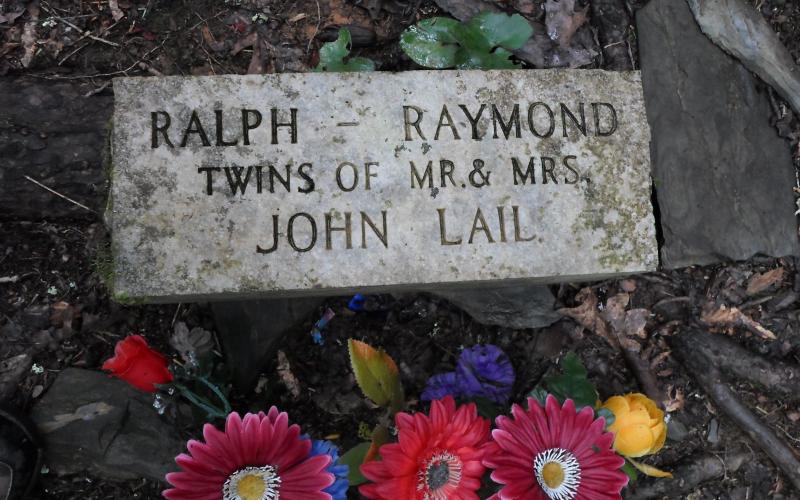The Lail Twins

The double grave of the Lail Twins lies all by itself out a side ridge off Cooper Road Trail in the far west end of Great Smoky Mountains National Park. The gravesite is like a small hideaway, a secret place in the forest. Today these two boys lie in profound isolation, out on a ridge far from everything, but in their day there would have been habitation nearby.
Reconstructing the story of these twins and how they came to be buried here is an example of how the Remembrance Project is a collaborative effort. Our original account of the gravesite on GoSmokies included no explanation as to how these boys happened to be buried out here. GoSmokies member Dwayne Allen responded, communicating a conversation he'd had with a man who claimed to be a younger brother to these twins.
In 1921, the teenage mother of these boys was seven and a half months pregnant when her husband announced they were going to visit her sister, a fifteen mile trip on foot. This couple apparently did not have a horse and wagon, or the horse was needed in the fields. The mother went into labor enroute and the boys did not survive. They are buried on a ridge above where they were born.
When we first read Dwayne's account that the father took his pregnant wife on a fifteen mile march, our first impression was to visualize the husband as callous and immature, perhaps no more than a teenager himself, oblivious to his wife's welfare. But perhaps not. How often would a man of that era declare they were making such a trip to visit an in-law? Perhaps he felt inadequately prepared to care for her and knew he needed to get her to her sister's while there was still time before she came to term.
When things take place before our time, we tend to create a frame of reference using historical events and history book references. In 1921, the Titanic had been underwater for nearly a decade, and World War I had already been fought with tanks and biplanes. The world was industrialized, and in trying to reconstruct what life might have been like, we might overlook that for some the only mode of transportation was still by foot.
Regional cemetery historian Robert McGinnis refers to this place as "Simerly Cemetery" with no further background. Other sources call it "Cooper Cemetery," in reference to its proximity to the Cooper Road Trail.
